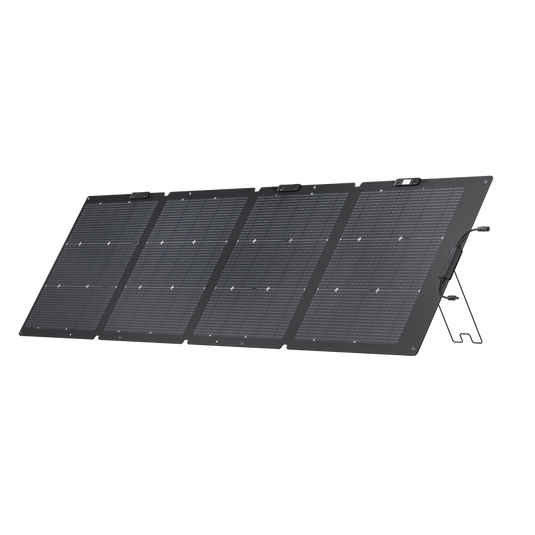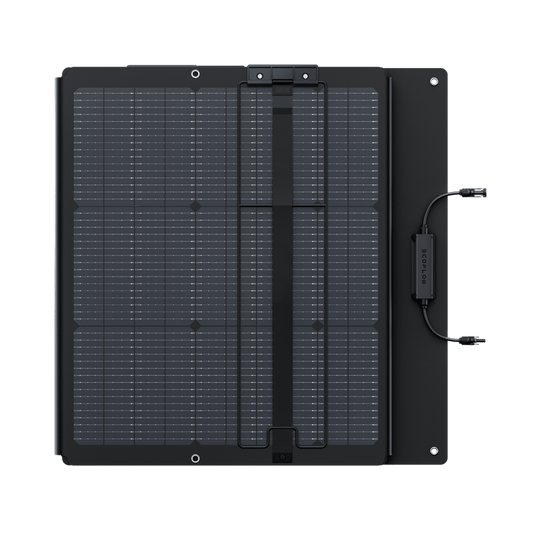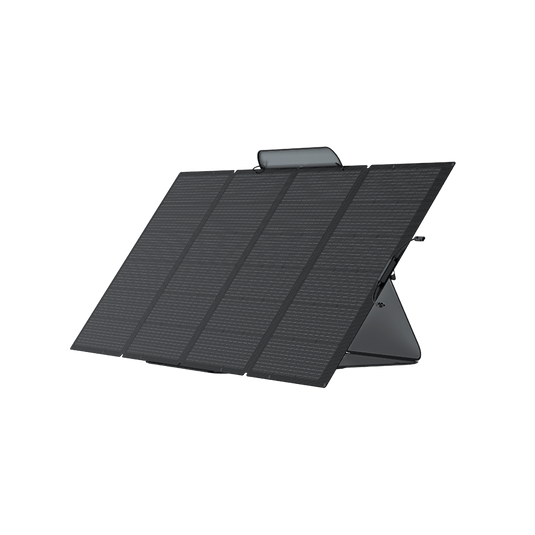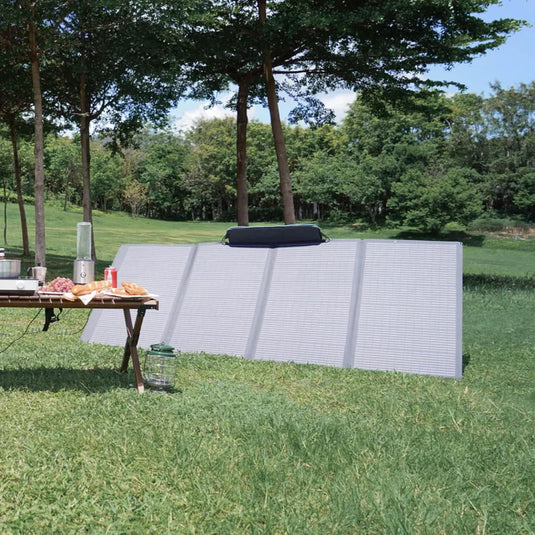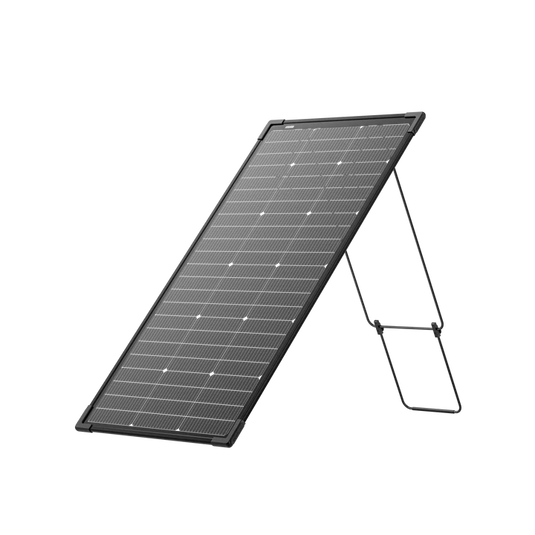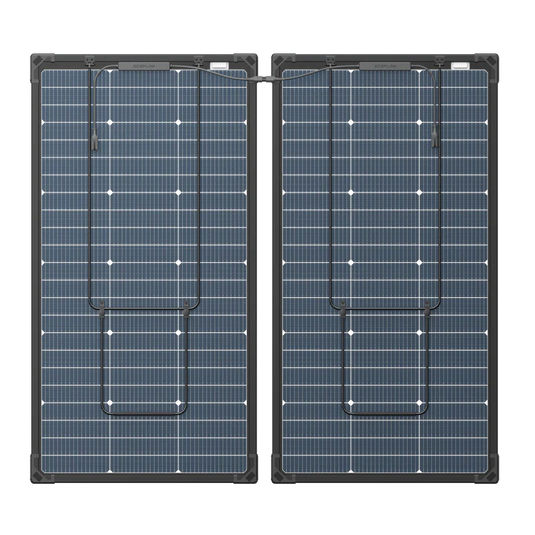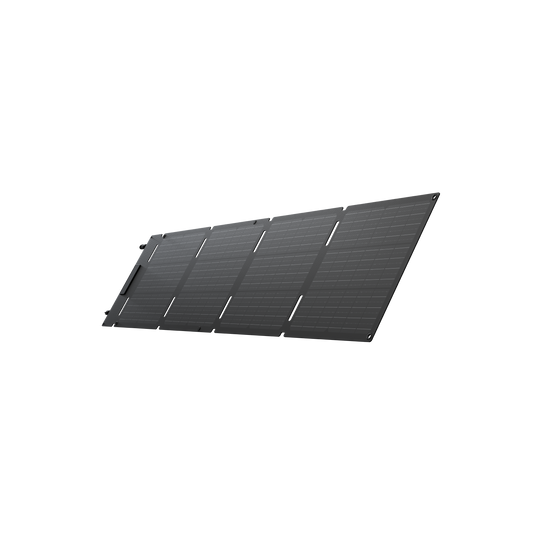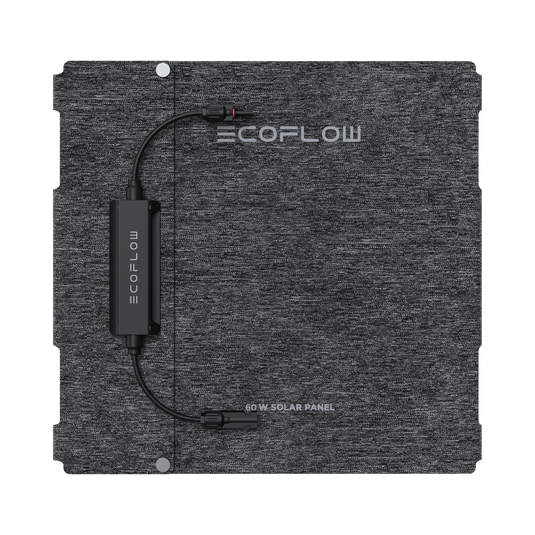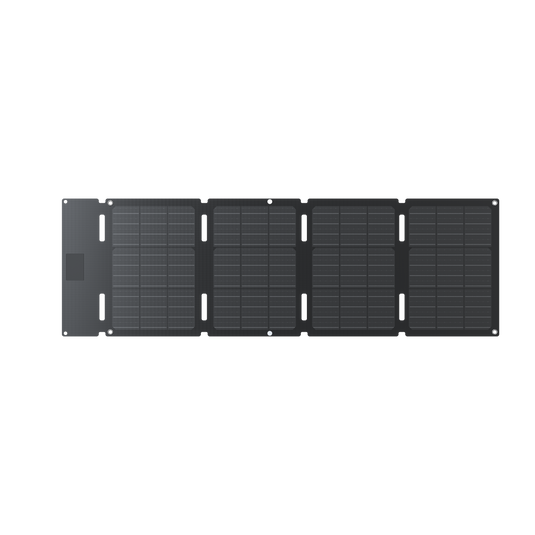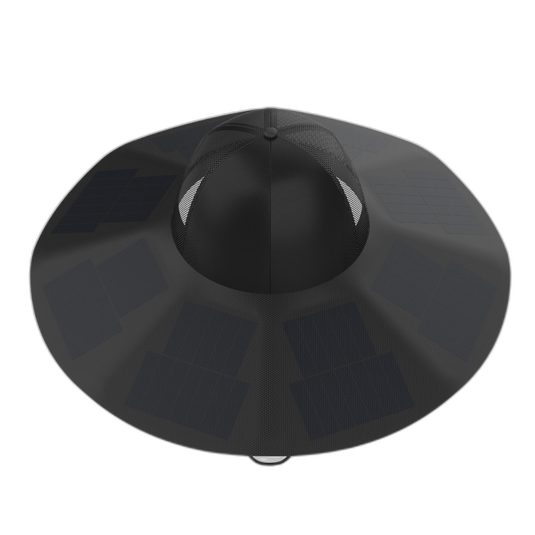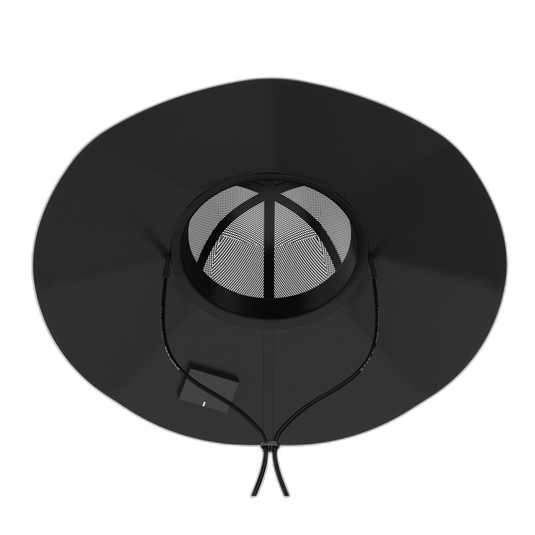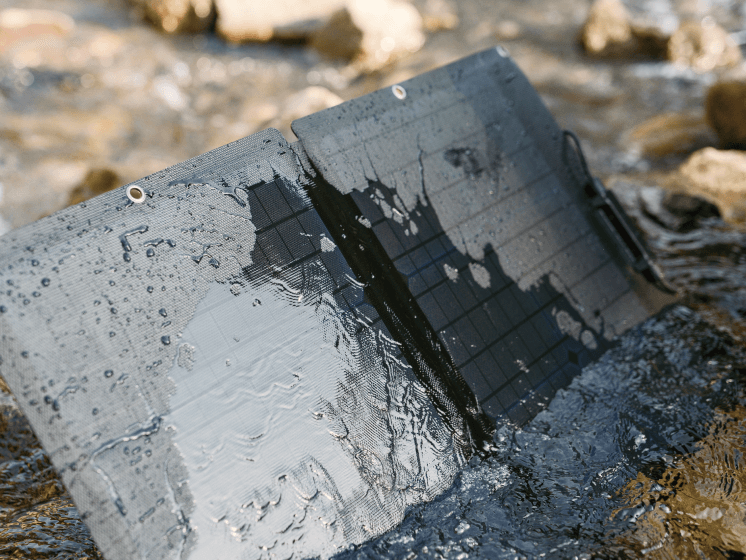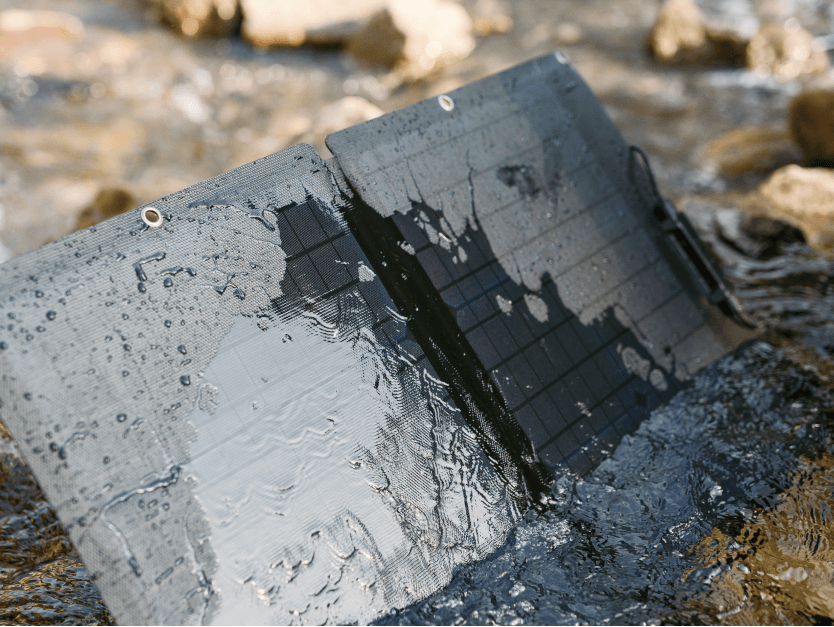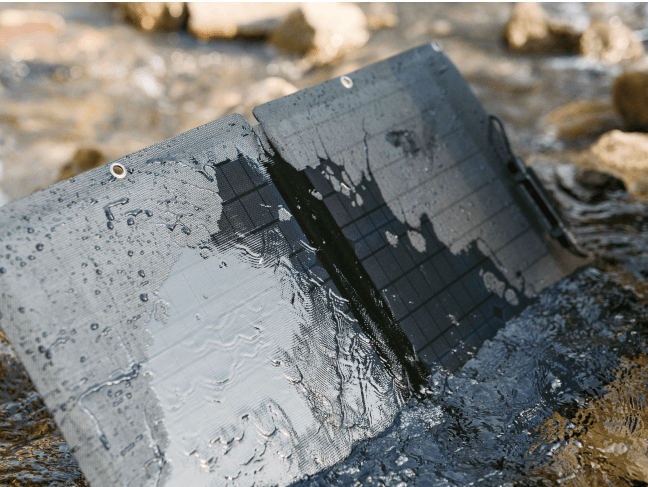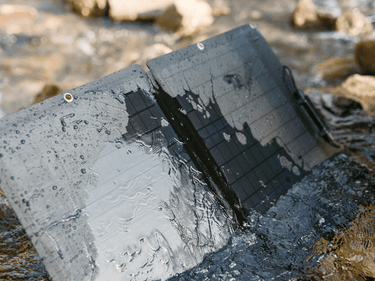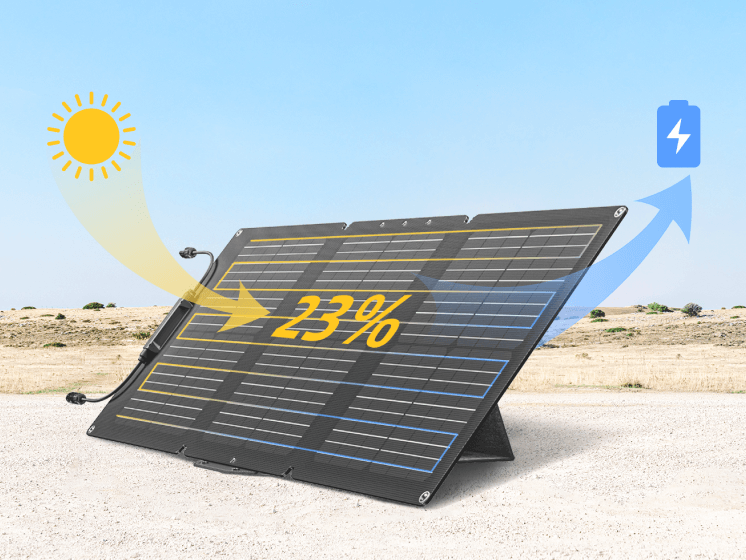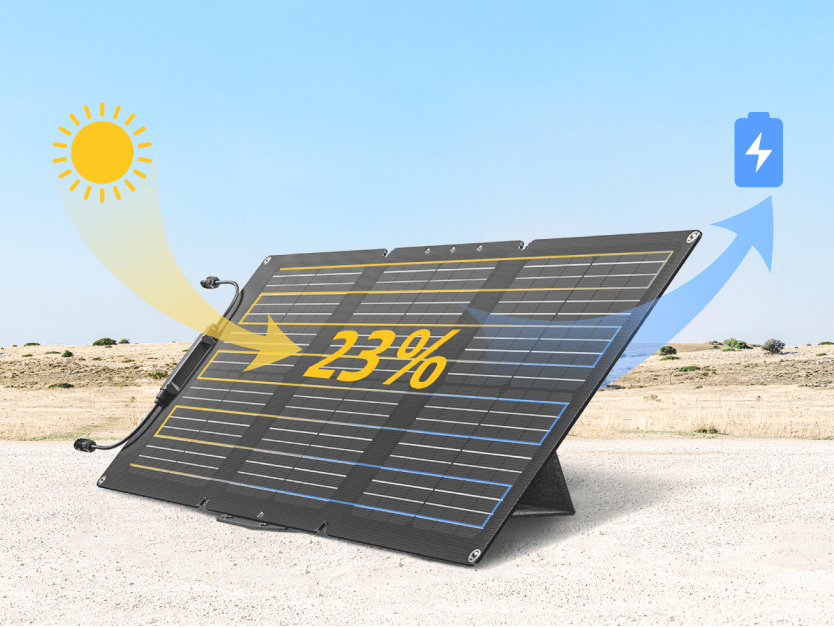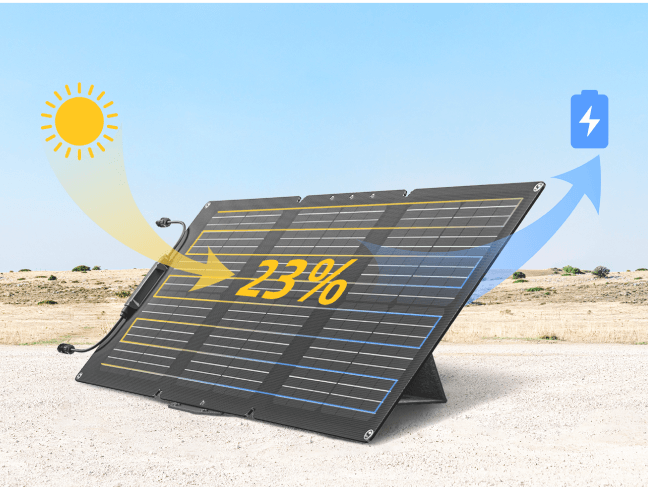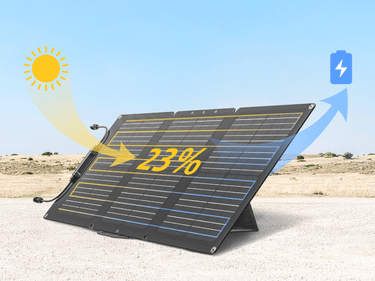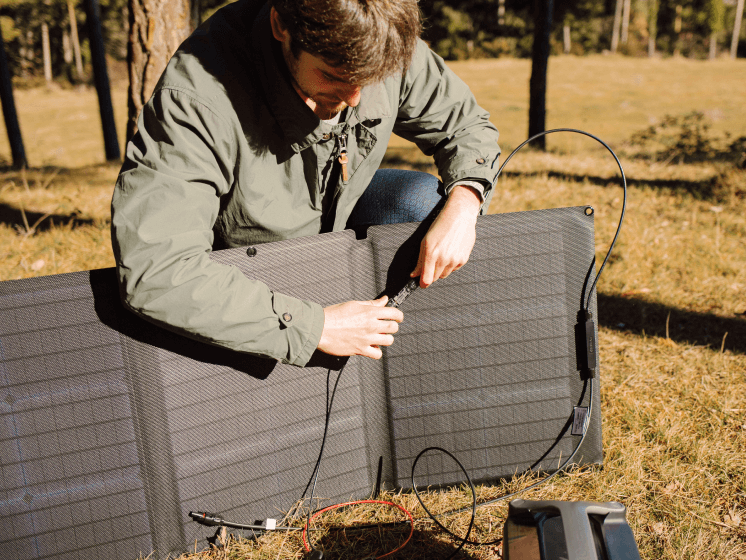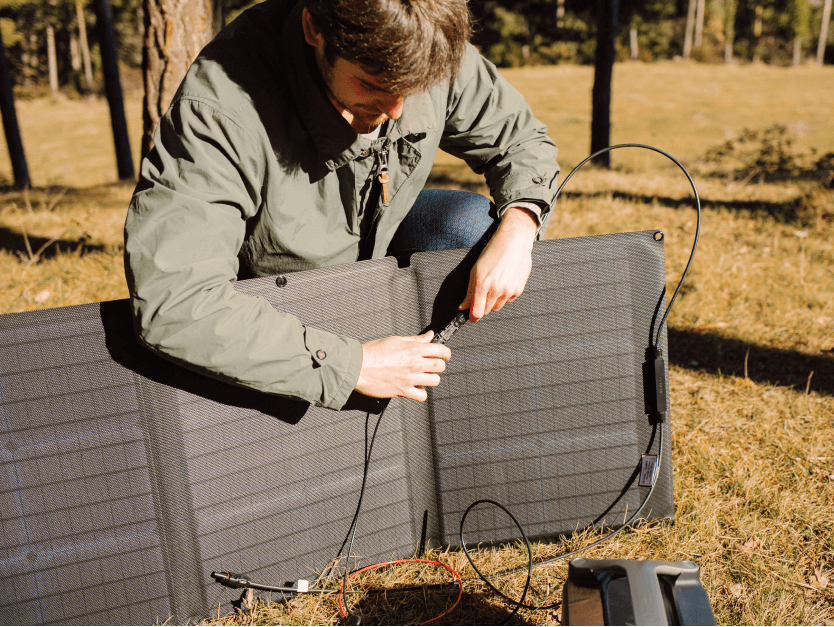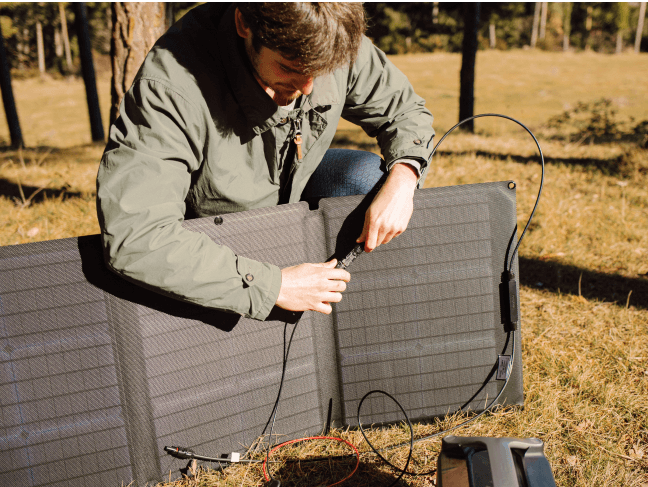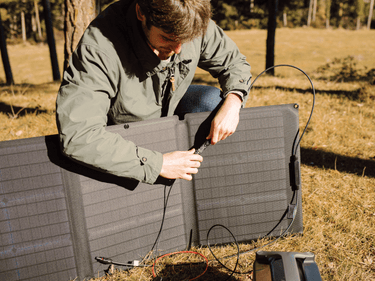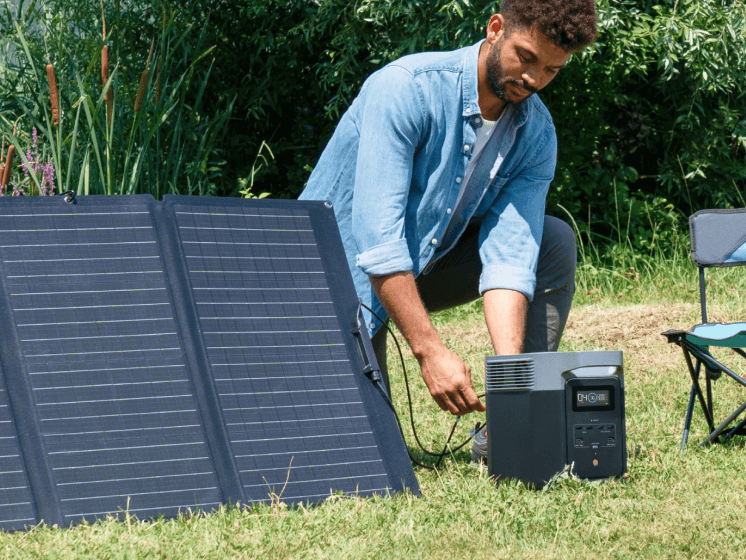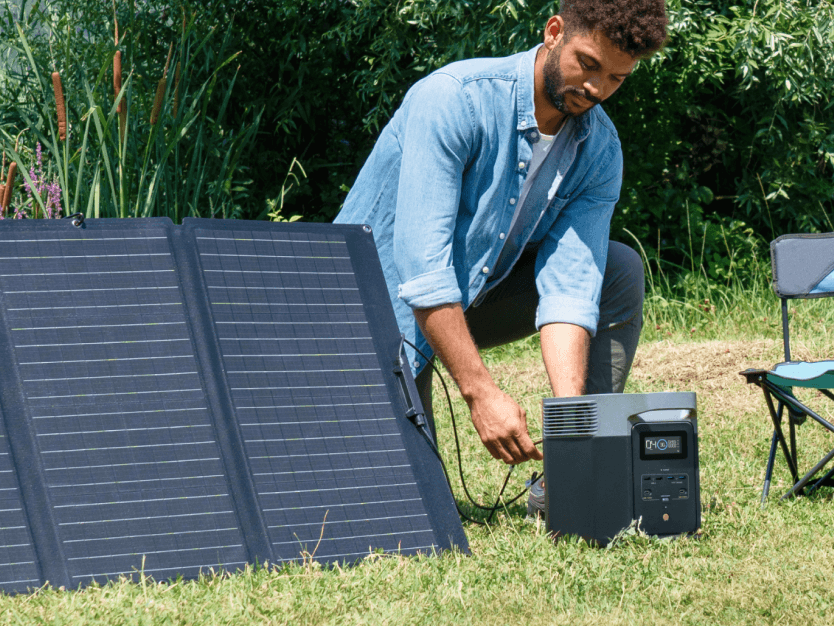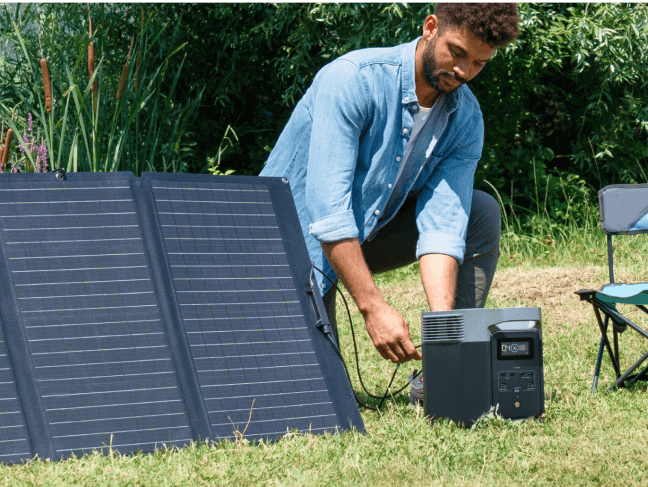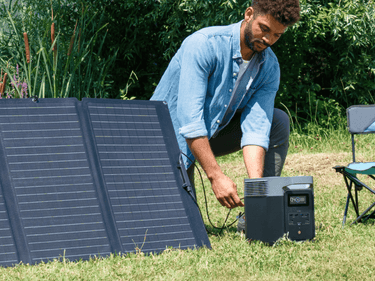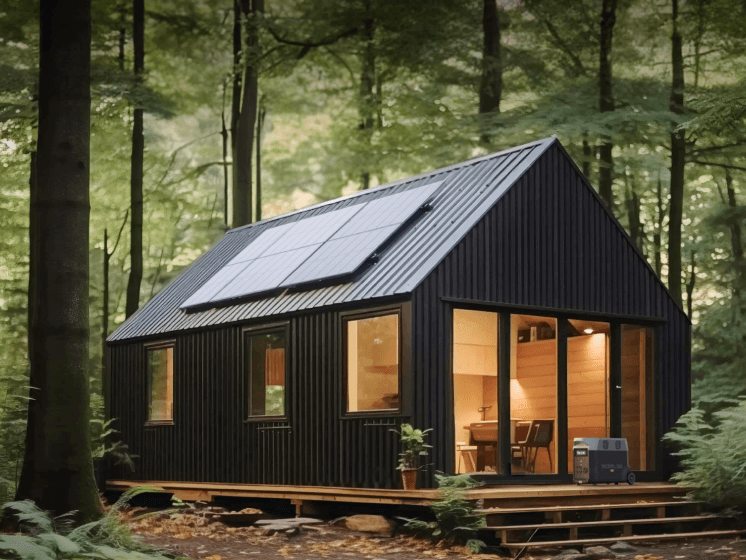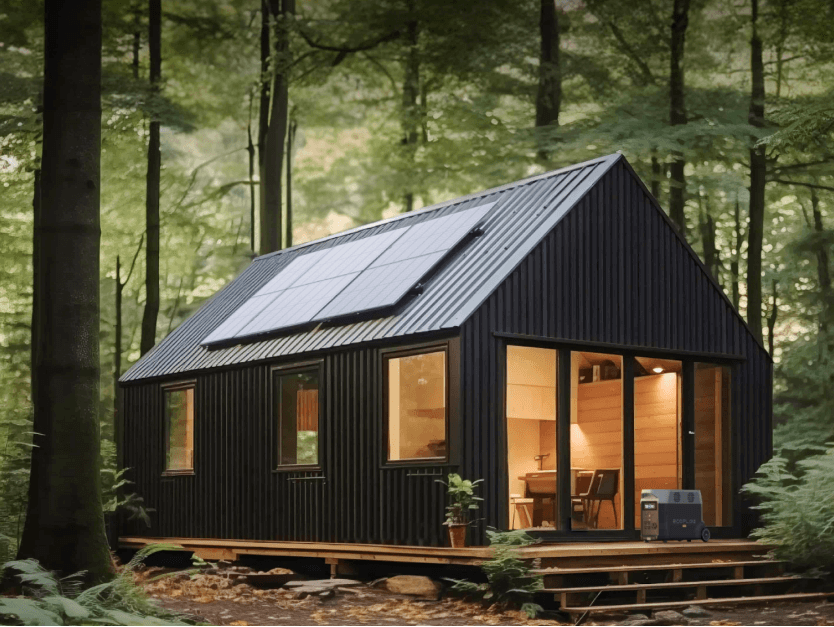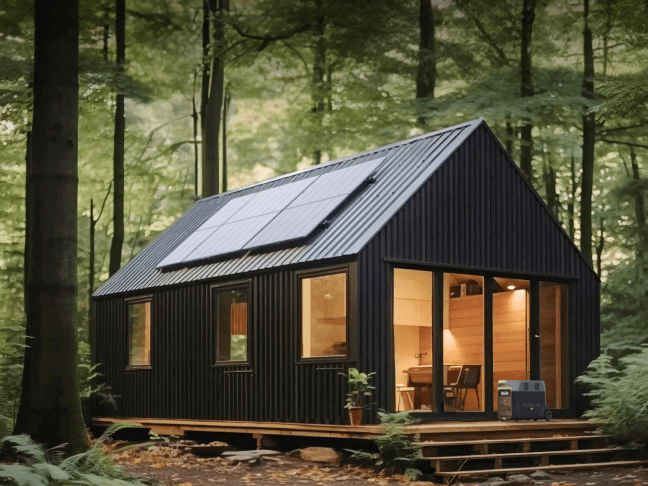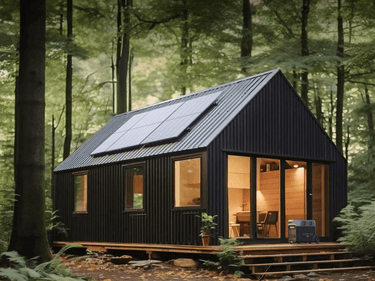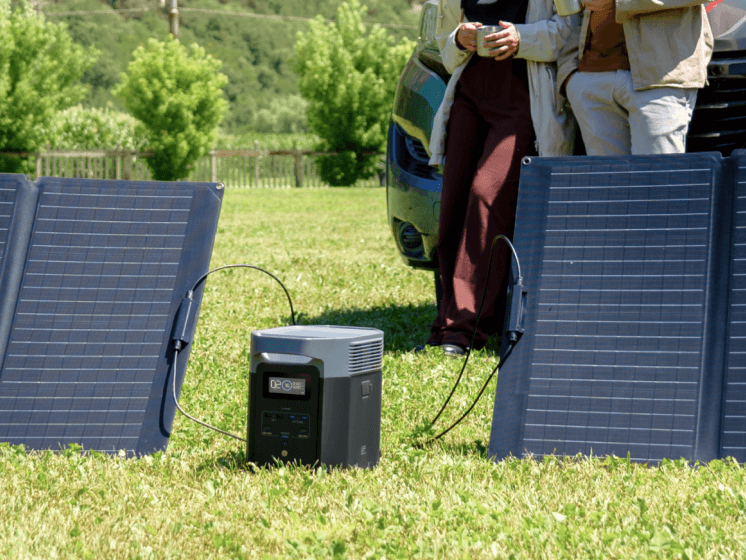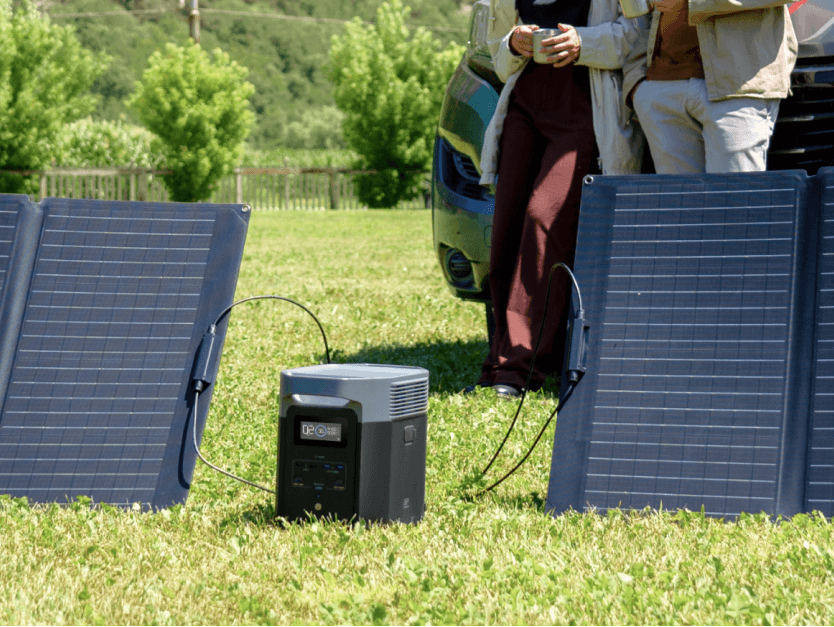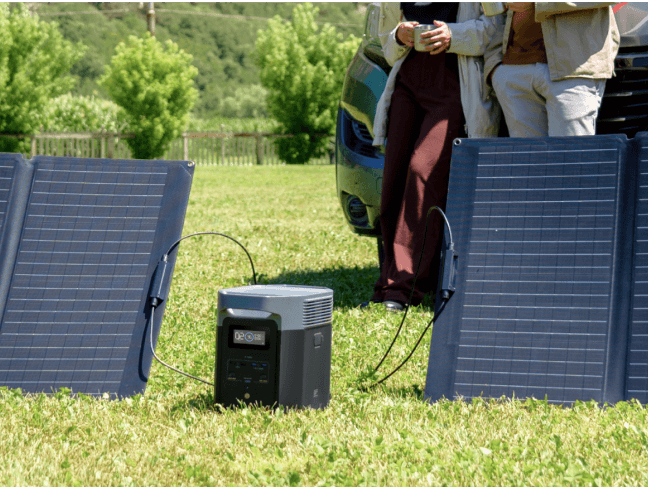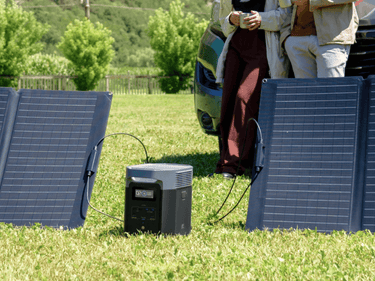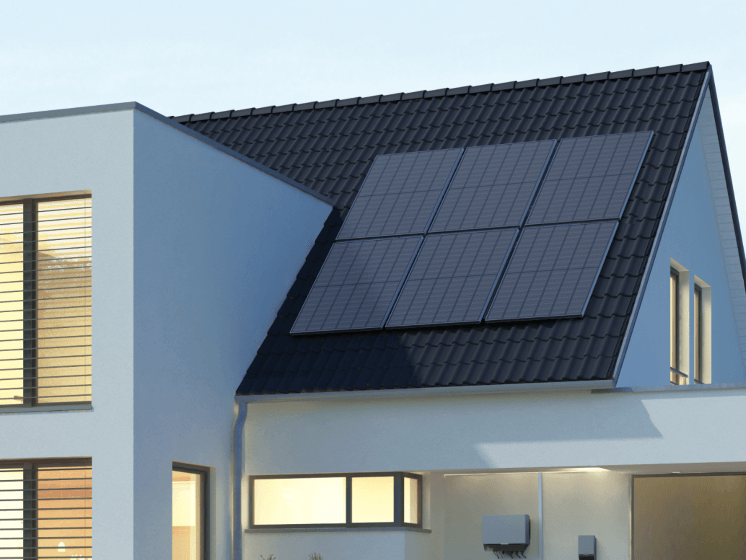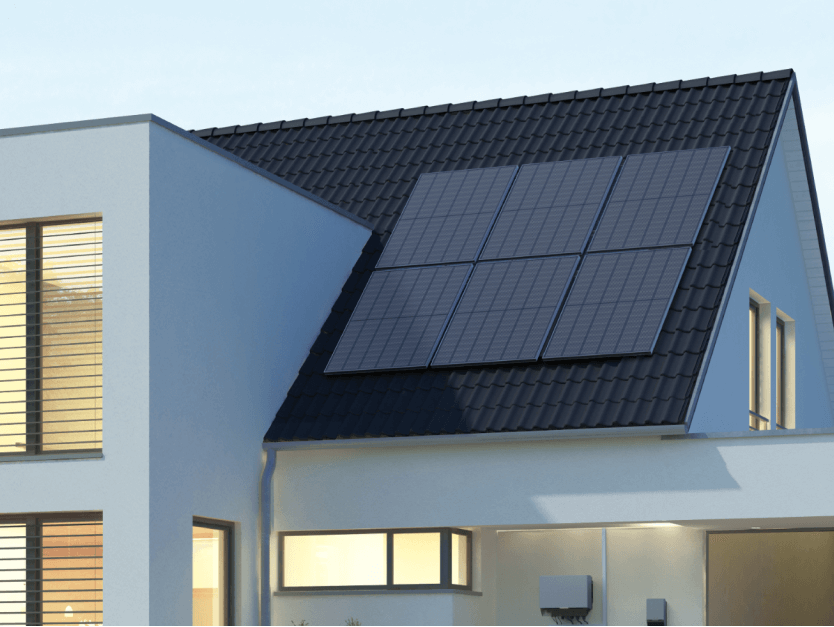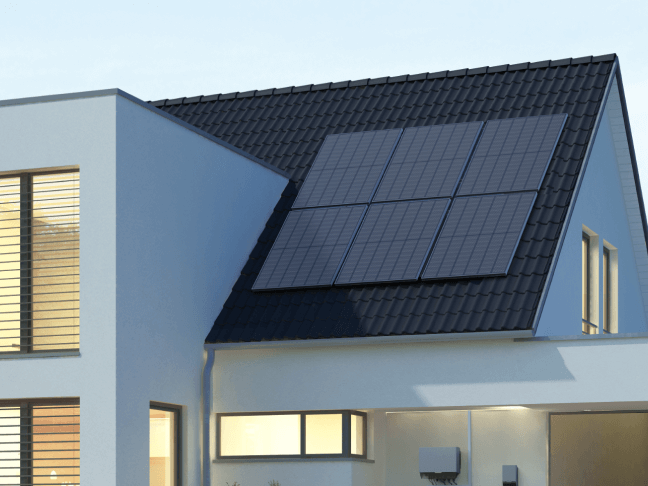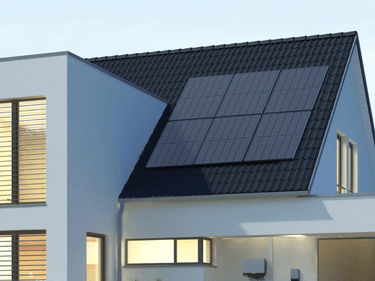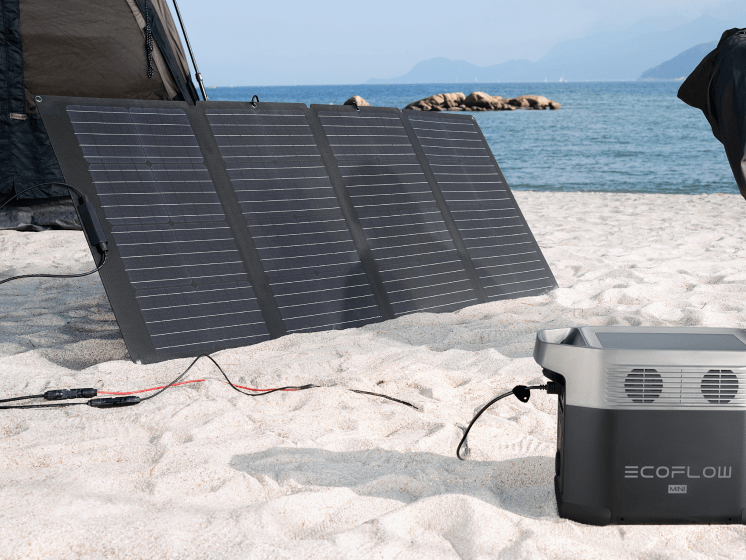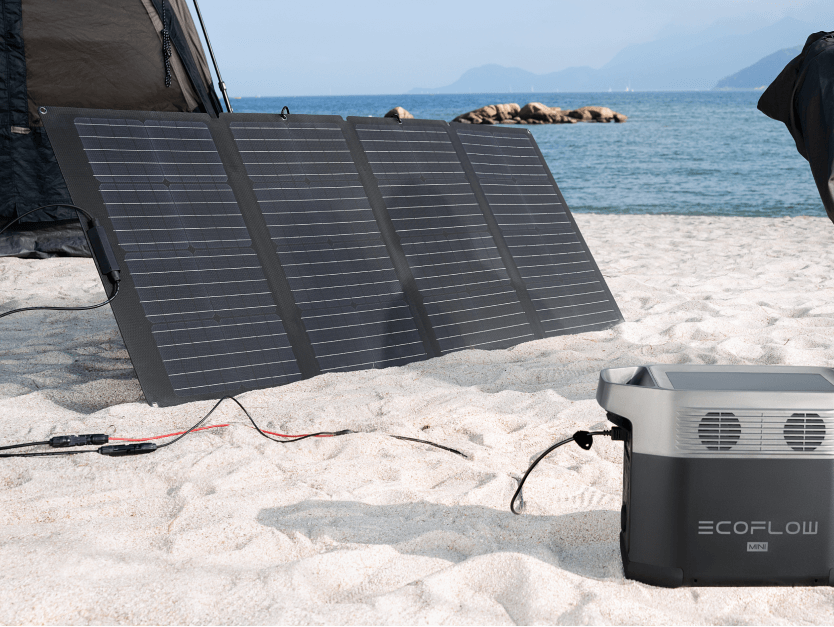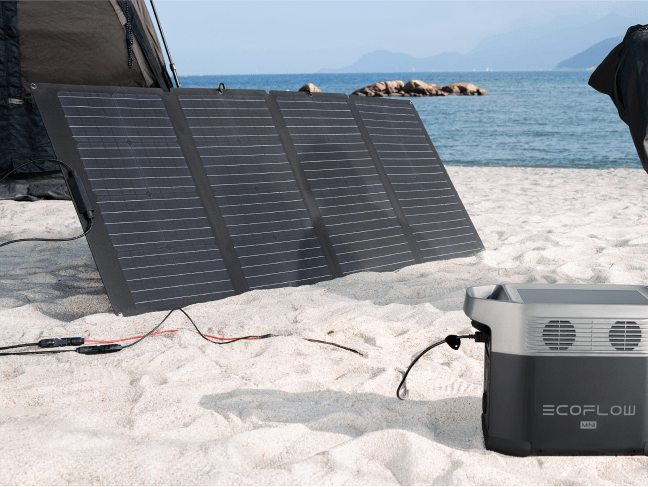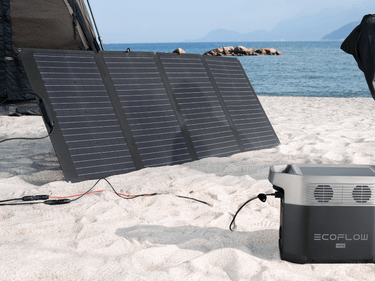Portable Power Stations \13Item(s) Found
Portable Power Stations \13Item(s) Found
EcoFlow NextGen 220W Bifacial Portable Solar Panel
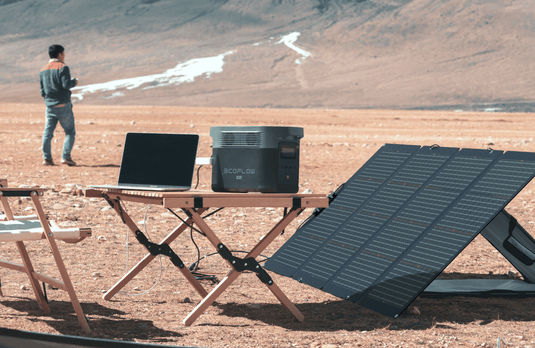

EcoFlow NextGen 220W Bifacial Portable Solar Panel
EcoFlow 400W Portable Solar Panel
EcoFlow NextGen 160W Bifacial Solar Panel
EcoFlow 400W Rigid Solar Panel
EcoFlow 100W Rigid Solar Panel
60W Portable Solar Panel(New Generation)
EcoFlow Power Hat
More Features
Frequently Asked Questions
How do solar panels work?
Solar panels work by converting sunlight into usable electricity through a process called the photovoltaic effect. Each solar panel contains multiple solar cells, typically made from monocrystalline or polycrystalline silicon. When sunlight hits these cells, it excites the electrons within the material, creating a flow of direct current (DC) electricity.Since most homes and appliances use alternating current (AC) power, an inverter is used to convert the DC electricity into AC. This electricity can then be used immediately, stored in a battery for later, or sent back to the grid (if your system is grid-tied), reducing your overall energy bills.
Are solar panels worth it?
- In Australia, solar panels are generally a worthwhile investment:
- Policy Support: The federal government offers incentives through the Small-scale Renewable Energy Scheme (SRES), providing upfront discounts of around AUD 1,500–2,500 for a typical 6.6kW system, depending on location and market rates. While some state programs like Victoria’s solar rebate provide up to AUD 1,400, others like NSW and QLD support solar through battery incentives or low-interest loans.
- Cost & Return: Installation costs average AUD 0.80–1.08/W. A 6.6kW system costs AUD 5,000–9,000 after subsidies. Annual electricity bills, on average AUD 1,500–2,000, can be covered by solar, with excess power exported back to the grid under feed-in tariffs.
- Environment & Energy: Solar power cuts fossil fuel use and emissions, aligning with Australia’s renewable energy objectives. Abundant sunlight boosts energy self-sufficiency and grid stability.
How Much Do Solar Panels Cost?
The cost of solar panels in Australia can vary significantly depending on system size, panel efficiency, installation costs, and whether you're choosing a rooftop or portable setup.A typical residential rooftop solar system (around 6.6kW) generally costs between $5,000 and $9,000 after applying federal STC incentives.If you're looking at more flexible solutions like Portable Solar Panels, prices may range from a few hundred to a few thousand dollars depending on power output, build quality, and features like waterproofing or bifacial technology.
How much can I save with solar panels?
The amount you can save with solar panels depends on several factors, including your location, energy usage, system size, and available incentives. On average, homeowners can reduce their electricity bills by 50% to 90%. Installing solar panels also increases your property value and protects you from rising utility rates. Additionally, many regions offer tax credits, solar panel rebate and other incentives that can significantly lower the upfront costs. Over time, these savings often outweigh the initial investment, making solar panels a cost-effective choice for reducing energy expenses.
Are there government incentives for solar panels?
Yes, the Australian government offers various incentives to make solar panels more affordable. The most common is the Small-scale Renewable Energy Scheme (SRES), which provides Small-scale Technology Certificates (STCs) that reduce the upfront cost of solar installations. Additionally, some states and territories offer rebates or interest-free loans to encourage solar adoption. These incentives can significantly lower the price of your solar panel system, helping households and businesses transition to clean energy more cost-effectively.




















